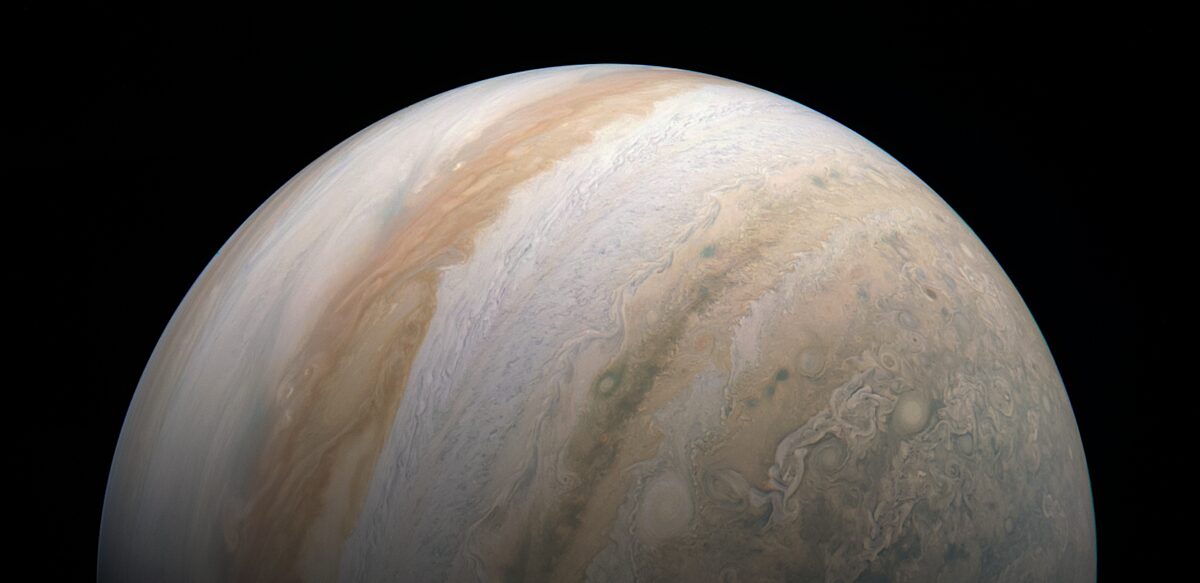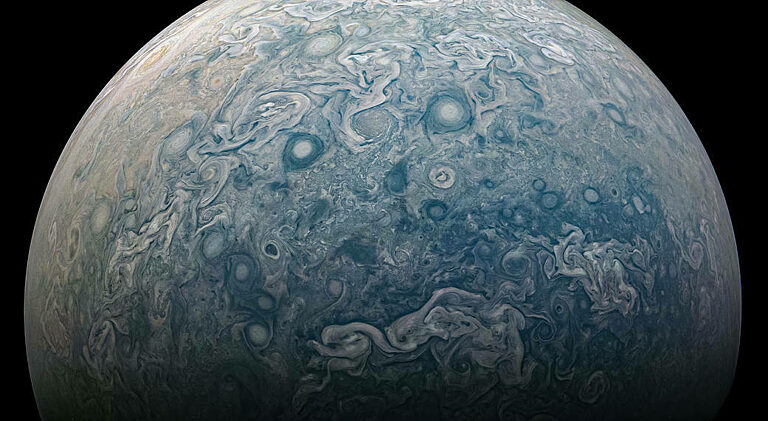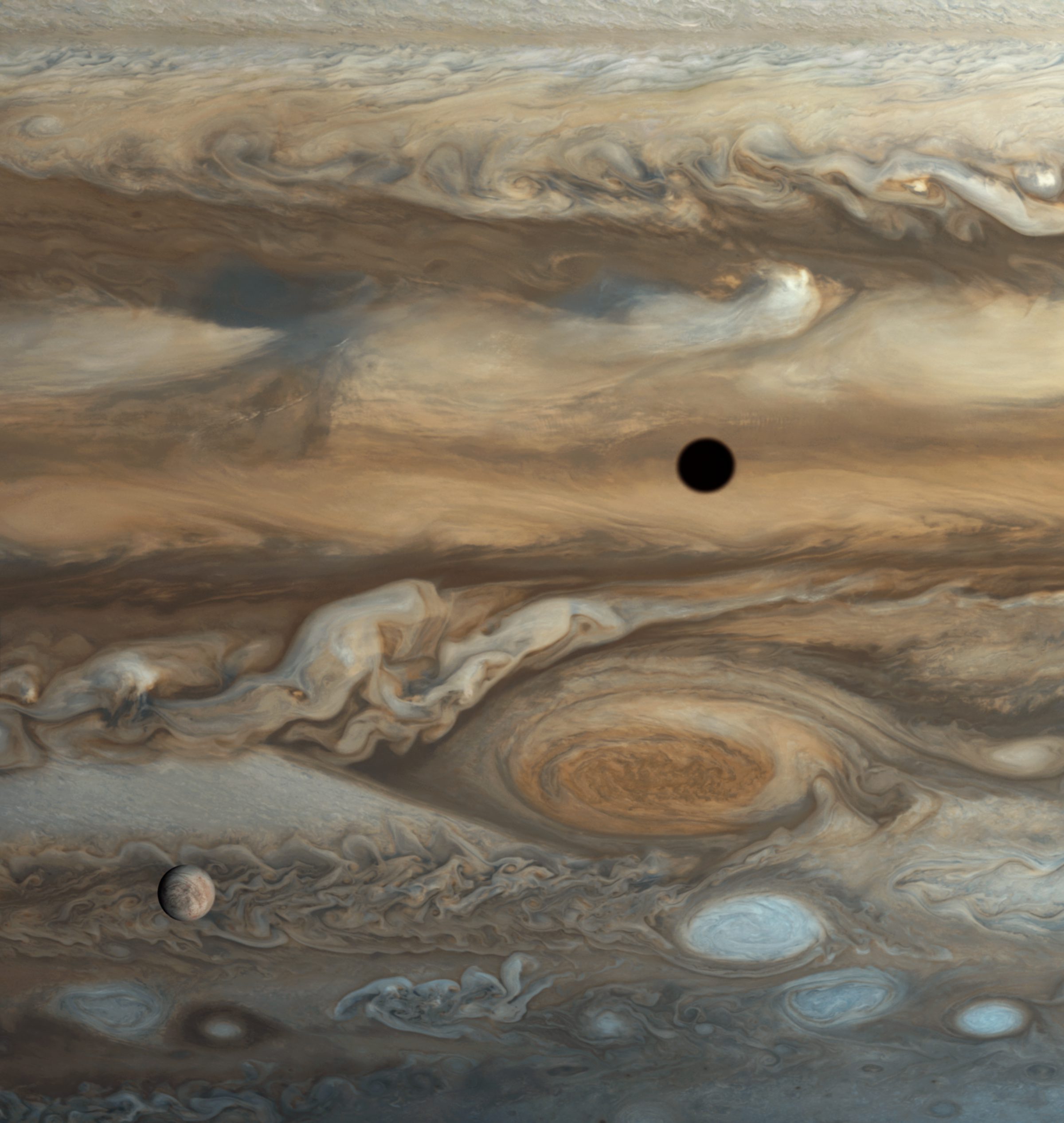Jonathan O’Callaghan • Jul 25, 2024
Why does Jupiter spin so fast?
Our planet rotates at a relatively sedate 23 hours and 56 minutes, but Jupiter’s rotation is much faster: it spins roughly once every nine hours and 50 minutes, the fastest of any planet in the Solar System. Why this is the case can tell us a lot about not only the Solar System but worlds around other stars, too.
The need for speed
All the planets of the Solar System rotate at different rates. At the lowest end is Venus, which takes an extremely long 5,832 hours to complete a rotation –. Mercury is long too, at 1,408 hours, because of its proximity to the Sun and the immense gravitational pull of the Sun.
Farther out, the rest of the planets are more similar in rotation. A day on Mars lasts 25 hours, Saturn 11 hours, Uranus 17 hours, and Neptune 16 hours. But Jupiter is the fastest of them all, with its equator spinning at a rapid 43,000 kilometers per hour (28,000 miles per hour), about 28 times faster than Earth. That spin gives Jupiter a particularly large bulge: at its poles, the planet is 134,000 kilometers (83,000 miles) across, but at its equator, it is 143,000 kilometers (89,000 miles) as the planet swells out.

Why this is the case, and how you actually measure “spin” on a gas giant like Jupiter, is an interesting question, something that scientists have only recently been able to grapple thanks to results from a NASA spacecraft orbiting Jupiter, called Juno.
Rotation, rotation, rotation
Measuring spin on a gas giant like Jupiter compared to a rocky planet like Earth is a little tricky. “It’s not like you can look at the surface,” said Ravit Helled at the University of Zurich in Switzerland. Jupiter is almost entirely composed of hydrogen and helium, a giant gaseous ball spinning in space. So how do we know how fast it’s actually spinning?
We calculate this by studying the planet’s magnetic field. Measuring the planet’s radio emissions, we can work out the spin of its internal magnetic field, in turn giving us the spin of the planet. “We’re finding periodicities in the magnetic fields,” said Helled. This same technique allows us to measure the spins of the other gas giants, too.
Juno, which entered orbit around Jupiter in 2016, also used gravitational measurements to determine how Jupiter spins. The spacecraft has shown that the winds in the planet’s outer atmosphere extend down about 3,000 kilometers (1,900 miles) into the planet. “For decades it was not known if the winds penetrate very deep into the interior,” said Helled, a member of the Juno science team. “Thanks to Juno we could constrain the depth. Now we believe below 3,000 kilometers, the planet reaches uniform rotation.”
Spinning up
Where Jupiter gets this rotation rate from is another important question, and the answer might again lie in the planet’s magnetic fields. When the planet first formed 4.6 billion years ago, it accumulated mass from the disk of material around the young Sun. As it grew in size it would have spun faster and faster as its angular momentum increased, like a spinning ice skater drawing in their arms.

Yet Jupiter, actually, could spin faster. All planets have a break-up velocity, the fastest they can spin before the planet is torn apart, meaning Jupiter’s spin should be as fast as once every three hours. The reason why it is not might be due to magnetic fields braking the rotation speed of the planet early in its history, said Konstantin Batygin at the California Institute of Technology in the United States, who published the idea in 2018.
Early in its history, Jupiter would have had a disk of gas and dust around it that formed many of its moons. That same disk “plays a key role in extracting angular momentum from Jupiter,” said Batygin. “As the gas swirls around and becomes ionized, it couples to the Jovian magnetic field. And that coupling between the planetary magnetic field and the plasma extracts angular momentum away from the planet and slows it down.”
In fact, this process may have actually slowed the planet’s rotation to more than an Earth day in its early life, before the immense mass of the planet then spun it up again to its presently observed value, faster than the other planets. “The more massive you are, the faster you should rotate,” said Helled.
Other worlds
The fast rotation speed of Jupiter has important consequences for the planet. It “allows for dramatic atmospheric flows,” said Batygin, contributing to the iconic wind-driven bands we see in the planet’s atmosphere today and even some of the planet’s storms, like its giant Great Red Spot that has raged for centuries. “If you were to slow Jupiter down to a standstill, you would not see those beautiful bands,” said Batygin.

We also see greater variations in Jupiter’s atmosphere than the other planets because of this faster rotation. “When it comes to richness of atmospheric dynamics, Jupiter is definitely king of the planets,” said Helled. Other planets, like Uranus, look a “bit more bland” because of their slower rotation, she said.
Understanding Jupiter’s spin is key to understanding planets beyond the Solar System —exoplanets — too. While measuring spin on an exoplanet is difficult, we do know of some that rotate faster than Jupiter. Astronomers would “like to understand the trends, how rotation rate depends on planetary mass, and then link it to formation models,” said Helled.
Batygin said one of his motivations for trying to understand Jupiter’s spin was to see if some exoplanets might exceed the break-up velocity and get torn apart by their rotation. “As it turns out, that seems to not be the norm,” he said. “The norm seems to be this rotation which is slow compared to break-up. And probably the reason is you would have to cancel magnetic fields to get that to occur.”
Support our core enterprises
Your support powers our mission to explore worlds, find life, and defend Earth. You make all the difference when you make a gift. Give today!
Donate

 Explore Worlds
Explore Worlds Find Life
Find Life Defend Earth
Defend Earth

